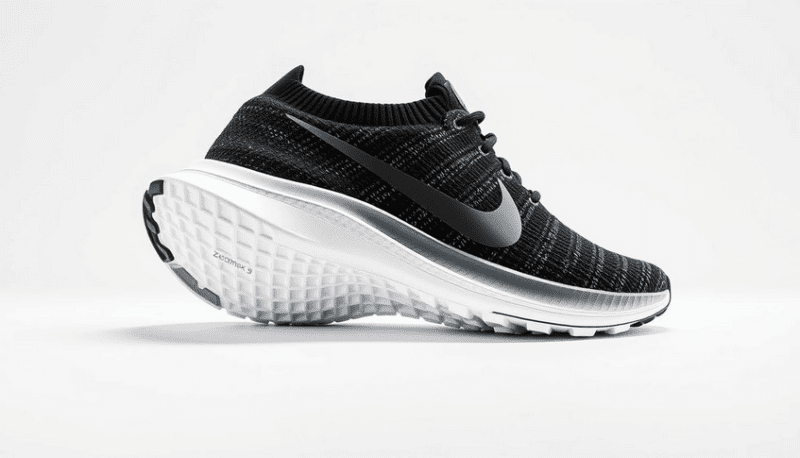A Low-Impact Path to Better Health
Walking is a simple yet powerful form of exercise that offers numerous benefits for both physical and mental health. As someone who has incorporated regular walks into my daily routine, I can attest to its transformative effects.
Walking can improve cardiovascular health, boost mood, and help maintain a healthy weight.

I've found that walking is an accessible exercise option for people of all ages and fitness levels. It requires no special equipment or gym membership, making it an excellent choice for those looking to start a fitness journey or maintain an active lifestyle.
From my experience, even a brisk 20-minute walk five days a week can significantly impact overall well-being.
One aspect I particularly appreciate about walking is its versatility.
I can adjust the intensity of my walks by increasing my pace, incorporating intervals, or tackling hilly terrain.
This flexibility allows me to continuously challenge myself and reap greater benefits as my fitness improves.
Key Takeaways
- Regular walking improves cardiovascular health and aids in weight management
- Walking is a versatile exercise suitable for all fitness levels and ages
- Consistent walking routines can boost mood and overall well-being
Physical and Mental Health Benefits

Walking offers a wide range of benefits for both physical and mental well-being. I've found it to be one of the most accessible and effective forms of exercise, with positive impacts on multiple aspects of health.
Heart Health and Disease Prevention
Walking regularly can significantly improve cardiovascular health. Studies have shown that it helps lower blood pressure and reduces the risk of heart disease and stroke.
A brisk 30-minute walk 5 days a week can strengthen the heart muscle, improve circulation, and lower bad cholesterol levels.
Doctors often recommend walking as a safe, low-impact exercise for those managing heart conditions. It can also help control blood sugar levels, which is crucial for preventing and managing type 2 diabetes.
Weight Management and Calorie Burning
I've found walking to be an excellent tool for weight management. A moderate-paced walk burns about 150-200 calories per 30 minutes, depending on factors like speed and terrain.
Here's a quick breakdown of calories burned for a 150-pound person:
- Slow walk (2 mph): 170 calories/hour
- Moderate walk (3 mph): 232 calories/hour
- Brisk walk (4 mph): 340 calories/hour
When combined with a balanced diet, consistent walking can help maintain a healthy body weight or contribute to weight loss.
Joint Health and Pain Management
Walking is gentle on the joints while still providing enough impact to strengthen bones and muscles. I've found it particularly beneficial for people with arthritis or joint pain.
The low-impact nature of walking:
- Lubricates joint tissues
- Strengthens muscles around joints
- Improves flexibility and range of motion
For those with arthritis, starting with short walks and gradually increasing duration can help manage pain and improve mobility over time.
Mood Enhancement and Mental Health
Walking has profound effects on mental health. I've experienced firsthand how it can boost mood and reduce symptoms of anxiety and depression.
Key mental health benefits include:
- Increased production of endorphins (feel-good hormones)
- Reduced stress and tension
- Improved sleep quality
- Enhanced cognitive function
Regular walks, especially in nature or with a friend, can combat loneliness and provide a sense of connection and purpose.
Immune Function and Disease Resistance
I've learned that walking can significantly boost immune function. Regular, moderate exercise like walking increases the production of white blood cells and antibodies, enhancing the body's ability to fight off infections.
Walking has been linked to:
- Reduced risk of viral infections
- Faster recovery from illness
- Lower inflammation levels in the body
For older adults, walking may help reduce the risk of cognitive decline and diseases like Alzheimer's. The combination of physical activity and mental stimulation from observing surroundings contributes to better brain health as we age.
Walking Routines and Practices

Establishing an effective walking routine is key to reaping the full benefits of this exercise. I'll cover strategies for developing consistency, optimizing intensity and duration, and seamlessly integrating walking into daily life.
Developing a Consistent Walking Routine
I recommend starting with a realistic goal of walking 3-5 days a week. Consistency is crucial, so I suggest choosing specific times and days for walks.
Mornings often work well, as it energizes me for the day ahead.
I find it helpful to track my progress using a fitness app or pedometer. Aiming for 10,000 steps daily is a common target, but I adjust based on my fitness level and goals.
I vary my routes and invite friends or family to join me to stay motivated. Walking groups or clubs can provide social support and accountability.
Intensity and Duration for Optimal Benefits
I aim for 150 minutes of moderate-intensity weekly walking for maximum health benefits. This typically means brisk walking at a pace of 2-3 mph.
I use the "talk test" to gauge intensity. If I can carry on a conversation but feel slightly breathless, I'm at the right level.
To increase the intensity, I:
- Incorporate hills or stairs
- Use hand weights
- Try interval training (alternating between normal and fast-paced walking)
I gradually increase my walking time, starting with 10-15 minute sessions and working up to 30-60 minutes.
Incorporating Walking in Daily Life
I look for opportunities to walk throughout my day:
- Taking the stairs instead of the elevator
- Parking farther away from my destination
- Walking short distances instead of driving
- Having walking meetings with colleagues
I break up long periods of sitting by taking brief walks every hour. Even a 5-minute stroll can boost my energy and focus.
On busy days, I split my walking goal into shorter sessions. Three 10-minute walks can be just as beneficial as one 30-minute walk.
I also use a standing or treadmill desk to increase my daily step count when working from home.
Exercise Techniques and Enhancements

Walking offers numerous health benefits, but certain techniques can maximize its effectiveness. I'll explore methods to boost calorie burn, enhance circulation, and improve overall fitness through walking.
Techniques for Increased Calorie Burn
To burn more calories while walking, I recommend increasing your pace. Aim for a brisk walk at 3-4 mph. This can significantly boost calorie expenditure compared to a leisurely stroll.
Adding intervals is another effective strategy. I alternate between 1 minute of fast walking and 1 minute of regular pace. This variation keeps my heart rate elevated and increases overall calorie burn.
Incorporating hills or stairs into my route also intensifies the workout. The added resistance engages more muscles and requires greater effort, leading to higher calorie expenditure.
Using hand weights or wrist weights while walking can further increase calorie burn. I start with light weights (1-2 pounds) and gradually increase as I build strength.
Improvements in Circulation and Blood Sugar
Regular walking can have positive effects on circulation and blood sugar levels. I've found that maintaining a consistent walking routine helps improve my overall cardiovascular health.
To enhance circulation, I focus on proper form. I keep my head up, shoulders relaxed, and arms swinging naturally. This posture promotes better blood flow throughout my body.
For blood sugar management, I aim for post-meal walks. A 15-20 minute walk after eating can help regulate blood glucose levels. This is especially beneficial for those at risk of type 2 diabetes.
I also incorporate interval training to improve insulin sensitivity. Short bursts of increased intensity during my walks can have a positive impact on blood sugar control.
Walking for Physical Fitness and Stamina
I gradually increase my walking distance and duration to build stamina through walking. I start with shorter walks and slowly work up to longer distances over time.
Incorporating different terrains into my walks helps improve overall fitness. I alternate between flat surfaces, hills, and uneven paths to challenge different muscle groups.
Cross-training with other low-impact exercises can enhance my walking performance. I include activities like swimming or cycling to improve my cardiovascular endurance.
To track my progress, I use a pedometer or fitness app. Setting daily step goals motivates me to stay consistent and gradually increase my activity level over time.
Additional Benefits and Considerations

Walking offers several unexpected advantages beyond physical fitness. It can spark creativity, boost energy, and even extend lifespan when done regularly.
Enhanced Creative Thinking and Energy Levels
Walking stimulates creative thinking and problem-solving. I've found that a brisk walk can help clear my mind and generate fresh ideas. It increases blood flow to the brain, enhancing cognitive function.
A daily walk also boosts my energy levels. Instead of reaching for caffeine, I take a short stroll to reinvigorate myself. This natural energy boost can last for hours, improving productivity throughout the day.
Regular walking releases endorphins, which elevate mood and reduce stress. I've noticed I feel more positive and focused after incorporating walks into my routine.
Walking in Different Environments
Walking in nature provides unique benefits. I find that green spaces reduce my stress levels more effectively than urban environments. Forest bathing, or spending time among trees, has been shown to lower cortisol levels.
Beach walks offer the added benefit of negative ions from the ocean air. These molecules can improve oxygen absorption and boost serotonin levels.
Urban walks have their own advantages. I enjoy exploring new neighborhoods and discovering hidden gems in my city. This type of walking combines exercise with cultural enrichment.
Life Expectancy and Overall Well-being
Studies suggest that regular walking can increase life expectancy. I'm motivated by research showing that brisk walking for just 30 minutes a day can add years to my life.
Walking improves cardiovascular health, reducing the risk of heart disease and stroke. It also helps maintain healthy blood pressure and cholesterol levels.
Weight-bearing exercise like walking strengthens bones and muscles. This is crucial for preventing osteoporosis and maintaining mobility as I age.
Walking also aids in digestion and promotes better sleep quality. I've found that an evening walk helps me unwind and prepare for a restful night.
Tracking Progress and Goals
Monitoring your walking routine and setting clear objectives can significantly boost motivation and results. I've found that using tools and establishing milestones are key to staying on track with my walking goals.
Using Pedometers and Fitness Trackers
I rely on pedometers and fitness trackers to quantify my daily steps. These devices provide accurate data on my physical activity. They help me reach the recommended 150 minutes of moderate exercise per week.
Many trackers aim for 10,000 steps a day as a default goal. While this target works for some, I adjust mine based on my fitness level and schedule.
Wearable technology also tracks other metrics like distance, calories burned, and heart rate. This comprehensive data gives me a clearer picture of my overall health and progress.
Setting Achievable Milestones
I've learned that setting realistic, incremental goals is crucial for long-term success. Instead of aiming for 10,000 steps immediately, I started with a lower target and gradually increased it.
My milestones include:
- Increasing daily step count by 500 each week
- Adding 5 minutes to my walking time every few days
- Tackling steeper inclines or faster paces monthly
I celebrate each achievement, no matter how small. This positive reinforcement keeps me motivated and committed to my walking routine.
By tracking my progress and setting clear goals, I've turned walking into a consistent, enjoyable part of my daily life.
Frequently Asked Questions
Walking offers numerous health benefits when done consistently. Here are answers to common questions about this simple yet effective form of exercise.
What health advantages does walking for 45 minutes daily provide?
Walking for 45 minutes each day can significantly improve cardiovascular health. It strengthens the heart, lowers blood pressure, and reduces the risk of heart disease. I've found this duration of walking also boosts energy levels and enhances mood by releasing endorphins.
How does regular walking contribute to weight loss?
Regular walking burns calories and increases metabolism. A brisk 30-minute walk can burn around 150-200 calories, depending on pace and body weight. Consistency is key - I've seen that daily walks combined with a balanced diet can lead to gradual, sustainable weight loss.
What changes can one expect in their body shape from consistent walking?
Consistent walking tones leg muscles and improves posture. It can lead to a more defined lower body and a slimmer waistline over time. I've noticed walking also helps reduce overall body fat, particularly when combined with strength training exercises.
How much daily walking is considered beneficial for health?
Aim for at least 30 minutes of brisk walking most days of the week. This aligns with health guidelines recommending 150 minutes of moderate-intensity exercise weekly. I've found that even shorter walks of 10-15 minutes provide health benefits if done multiple times a day.
Can regular walking specifically help in reducing belly fat?
While spot reduction isn't possible, regular walking can help reduce overall body fat, including abdominal fat. Combining brisk walking with a healthy diet is effective for losing belly fat. I've seen that high-intensity interval walking can be particularly beneficial for this purpose.
What are the overall wellness benefits of making walking a daily habit?
Daily walking improves physical and mental health. It reduces stress, enhances sleep quality, and boosts cognitive function.
I've experienced increased energy levels and improved mood from regular walks. It also strengthens bones, reduces the risk of chronic diseases, and promotes longevity.
DISCLAIMER
This document is provided for general information purposes only and should not be relied upon as providing legal advice, technical, or specific operational guidance to the reader, whether as to the practices described in the document or the applicable legal requirements and regulations. SAVE ON SNEAKS expressly disclaims any responsibility for liability arising from or related to the use or misuse of any information in this document.



